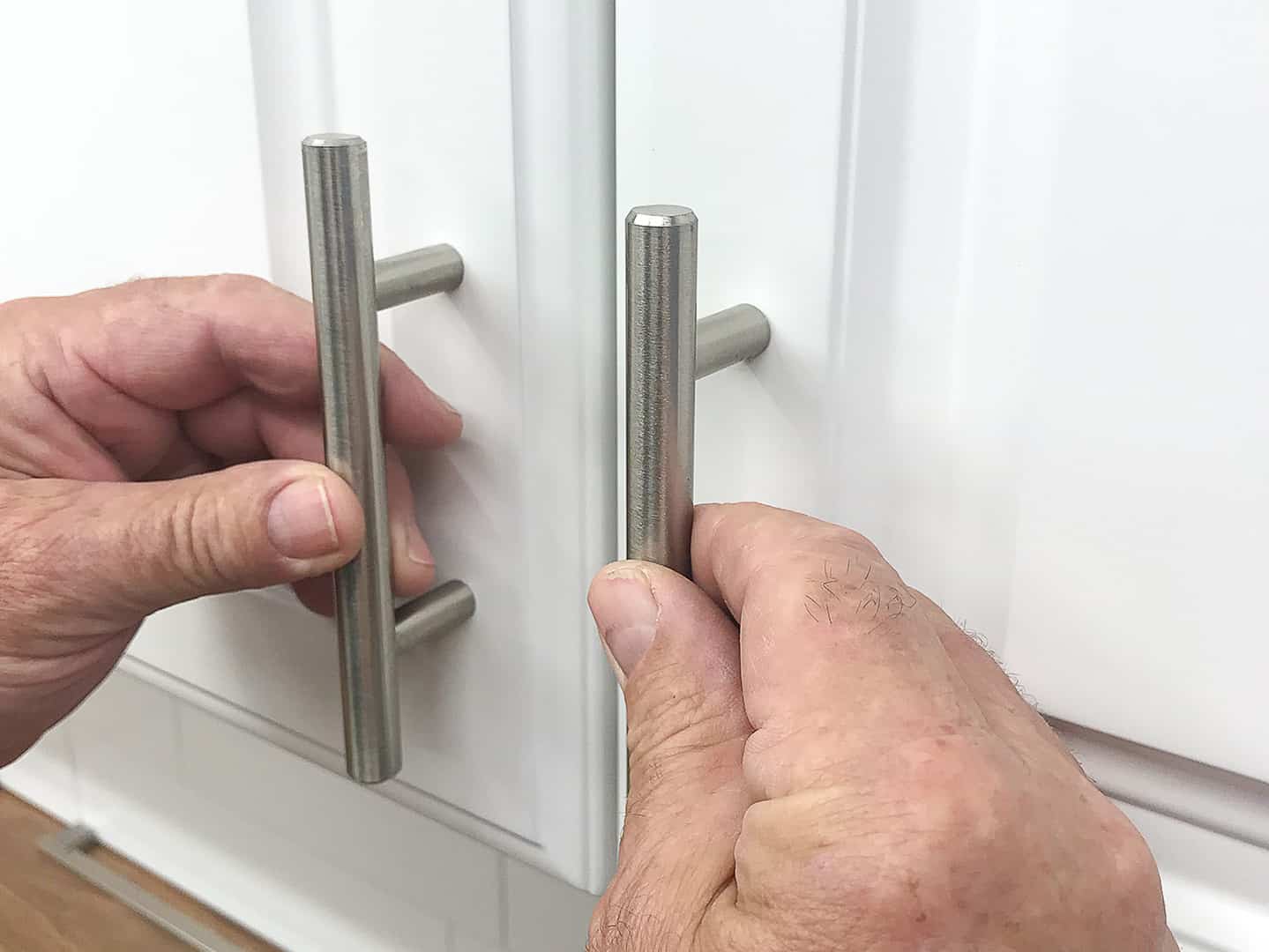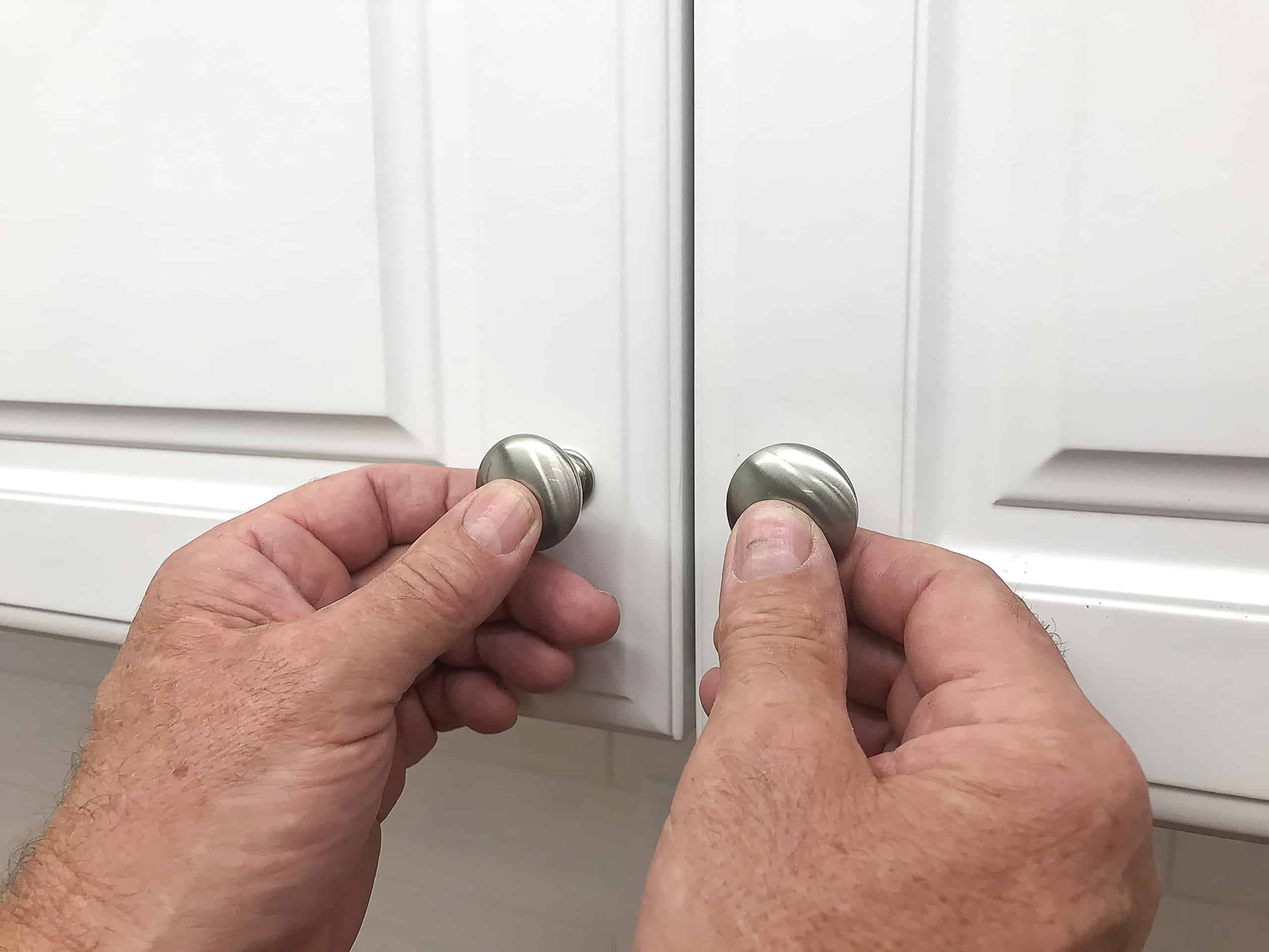Understanding Cabinet Door Types and Hardware

The successful installation of kitchen cabinet doors hinges on a thorough understanding of the various door types, their corresponding hardware, and the nuances of cabinet construction. This section details the different types of cabinet doors and their associated hardware, providing crucial information for a smooth and efficient installation process. Proper selection and installation of hinges are paramount to ensuring the doors function correctly and enhance the overall aesthetic appeal of the kitchen.
Cabinet Door Types, Hinges, and Hardware
The selection of cabinet doors significantly impacts both the functionality and the visual style of a kitchen. Different door styles necessitate specific hinge types and hardware. The following table summarizes key characteristics of common door types:
| Door Type | Hinge Type | Hardware Requirements | Installation Difficulty |
|---|---|---|---|
| Slab | Full Overlay, Semi-Overlay | Hinges, possibly magnetic catches | Easy |
| Shaker | Full Overlay, Semi-Overlay, Inset | Hinges, possibly knobs/pulls, possibly magnetic catches | Medium |
| Raised Panel | Full Overlay, Semi-Overlay, Inset | Hinges, knobs/pulls, possibly decorative hardware | Medium |
| Inset | Inset | Inset hinges, possibly knobs/pulls | Difficult |
Hinge Types and Installation Methods
Three primary hinge types are commonly used: full overlay, semi-overlay, and inset. The choice depends on the cabinet style and desired aesthetic.
Full overlay hinges allow the door to completely cover the cabinet face frame, creating a clean, modern look. Installation typically involves attaching the hinge cup to the door and the hinge leaf to the cabinet face frame, ensuring proper alignment for smooth operation. Precise measurements and alignment are critical for a flawless installation.
Semi-overlay hinges allow a portion of the cabinet face frame to remain visible when the door is closed. This style offers a slightly more traditional look and is often easier to install due to less precise alignment requirements. The installation process mirrors that of full overlay hinges, but the alignment tolerances are less stringent.
Inset hinges are used with inset doors, where the door sits flush with the cabinet face frame. These hinges are typically more complex to install, requiring precise measurements and careful adjustment to ensure the door sits perfectly within the frame. The installation process often involves using specialized jigs and templates to guarantee accurate placement.
Face Frame vs. Frameless Cabinets
The cabinet construction—face frame or frameless—significantly impacts door installation.
Face frame cabinets have a visible frame surrounding the cabinet box. Door hinges are typically mounted directly to this frame. The frame provides a stable mounting surface, simplifying installation. Installation is often straightforward due to the readily available mounting surface.
Frameless cabinets lack a visible face frame. The hinges are typically mounted directly to the cabinet box sides. This requires more precise measurements and installation techniques, as the mounting surface is less robust. Precise measurements and careful alignment are crucial to ensure proper door function and aesthetics.
Illustrative Comparison: Imagine two cabinets side-by-side. The face frame cabinet showcases a visible frame around the cabinet box, with hinges clearly mounted on this frame. The frameless cabinet, in contrast, has no visible frame; the hinges are attached directly to the cabinet sides, with the door sitting flush against the cabinet box. The difference is evident in the mounting surface for the hinges, impacting installation complexity and precision requirements.
Step-by-Step Installation Process: How To Install Kitchen Cabinet Doors

Installing kitchen cabinet doors successfully requires careful planning and execution. This process involves several key steps, from removing old doors (if applicable) to ensuring the final alignment and security of the new doors. Precise measurements and careful attention to detail are crucial for a professional-looking finish.
Cabinet Door Removal (If Necessary)
Before installing new doors, existing doors must be removed. This involves carefully detaching the hinges from both the door and the cabinet frame. It’s important to note the orientation of the hinges and any shims used for alignment before removal to aid in reinstallation. Use a screwdriver appropriate for the hinge screws to avoid damage. Gently pry the door away from the cabinet frame once the hinges are detached. Take care not to damage the cabinet or the door itself during this process.
Preparing the Cabinet
Prior to installing new doors, it is crucial to inspect the cabinet for any damage or imperfections that could interfere with proper installation. Clean the cabinet faces thoroughly, removing any dust, grease, or debris that may affect the adhesion of the hinges or prevent proper alignment. If there are any significant imperfections, they should be repaired before proceeding to the next step to ensure a smooth and even surface for the doors.
Accurate Measurement and Hinge Placement
Precise hinge placement is critical for proper door alignment. Begin by carefully measuring the distance between the edge of the cabinet door and the desired hinge location. Use a measuring tape and a pencil to mark these points. Many hinge manufacturers provide templates to aid in consistent placement. These templates ensure that the hinges are installed at the correct height and distance from the edges of the door and the cabinet frame, preventing misalignment. Align the template with the marked points and use a pencil to mark the exact hinge locations on both the door and the cabinet frame.
Attaching the Hinges
Using the marked locations as a guide, attach the hinges to the cabinet door and the cabinet frame. Start by attaching the hinge cup to the cabinet door, ensuring it’s flush with the surface. Then, attach the hinge leaf to the cabinet frame. Use the appropriate size screws and tighten them securely, but avoid over-tightening, which could damage the wood. It’s recommended to use a pilot hole to prevent splitting the wood. Repeat this process for all hinges on each door.
Door Alignment and Adjustment
Once the hinges are attached, carefully hang the doors on the cabinet frame. Minor adjustments may be necessary to ensure proper alignment.
- Vertical Alignment: If the door is too high or too low, adjust the screws on the hinge leaf attached to the cabinet frame. Tightening the top screw raises the door, while tightening the bottom screw lowers it.
- Horizontal Alignment: If the door is too far forward or backward, adjust the screws on the hinge cup attached to the door. Tightening the front screw pulls the door forward, while tightening the rear screw pulls it backward.
- Gap Adjustment: Uneven gaps between the door and the cabinet frame can be adjusted by carefully tightening or loosening the screws on the hinges. Small shims can be added to the hinge leaf on the cabinet frame to adjust gaps if necessary.
Securing the Doors
Once the doors are properly aligned, carefully check all the hinge screws to ensure they are firmly tightened. If any screws are loose, tighten them securely to prevent the doors from becoming misaligned over time. Inspect the entire installation to ensure there are no gaps or misalignments. A properly installed cabinet door should open and close smoothly without any binding or resistance.
Troubleshooting and Advanced Techniques

Cabinet door installation, while seemingly straightforward, can present unexpected challenges. Understanding common problems and employing advanced techniques for specialized doors ensures a smooth and professional finish. This section addresses troubleshooting common issues and provides guidance for installing more complex door types.
Common Installation Problems and Solutions, How to install kitchen cabinet doors
The following table summarizes frequently encountered problems during cabinet door installation, their causes, solutions, and preventative measures. Careful attention to these points can significantly reduce the likelihood of encountering difficulties.
| Problem | Cause | Solution | Prevention |
|---|---|---|---|
| Door Gaps are Uneven | Inconsistent hinge placement, warped door or cabinet frame, improper adjustment of hinges. | Carefully check hinge placement and alignment. Use shims to correct unevenness. If the door or frame is warped, consider replacement or planing. Adjust hinge screws for fine-tuning. | Precise hinge placement using a template. Inspect doors and frames for warping before installation. |
| Door Doesn’t Close Properly | Obstructions (e.g., paint buildup, hardware interference), misaligned hinges, warped door or cabinet. | Remove any obstructions. Check and adjust hinge alignment. If the door or cabinet is warped, consider replacement or planing. | Thorough cleaning before installation. Careful hinge alignment and installation. Inspect for warping before installation. |
| Door is Loose | Loose screws, incorrect hinge type, damage to the cabinet or door. | Tighten screws. If the problem persists, consider using longer screws or replacing hinges. Repair any damage to the cabinet or door. | Use appropriate screws for the material. Choose the correct hinge type for the door and cabinet. Handle doors and cabinets carefully during installation. |
| Door Binding | Paint buildup, warped door or frame, incorrect door sizing. | Lightly sand areas of friction. If the door or frame is warped, consider replacement or planing. Ensure the door is the correct size. | Careful painting and finishing. Inspect for warping before installation. Precise measurements and ordering. |
Installing Specialty Cabinet Doors
Installing specialty cabinet doors requires additional considerations beyond standard installation procedures. The following Artikels specific techniques for common specialty door types.
How to install kitchen cabinet doors – Proper installation of specialty doors enhances both the aesthetic appeal and functionality of your kitchen cabinets. Paying close attention to the unique requirements of each type ensures a professional result.
- Glass-Front Doors: Exercise extra care to avoid scratching the glass. Use soft cloths and protective padding during handling and installation. Ensure proper sealing around the glass to prevent moisture damage. Consider using specialized hinges designed for glass doors to distribute weight evenly.
- Doors with Special Hardware: Follow the manufacturer’s instructions carefully for installing any unique hardware. This might involve pre-drilling pilot holes or using specific tools. Precise measurements are crucial to ensure proper alignment and functionality of the specialized hardware.
- Inset Doors: Inset doors require precise measurements and fitting. The door sits within the cabinet frame rather than overlaying it. Careful planning and precise adjustments are crucial to achieve a flush and seamless appearance. Specialized jigs or templates can aid in achieving accurate results.
